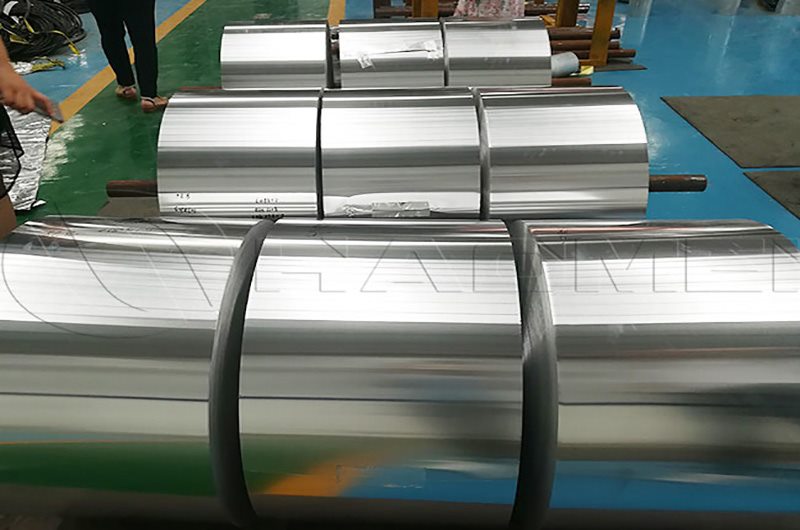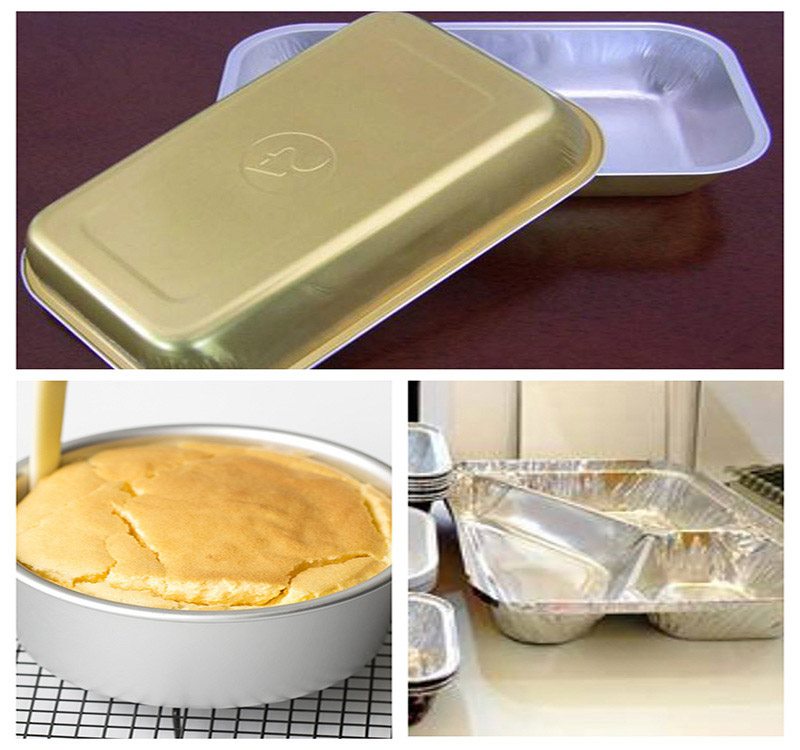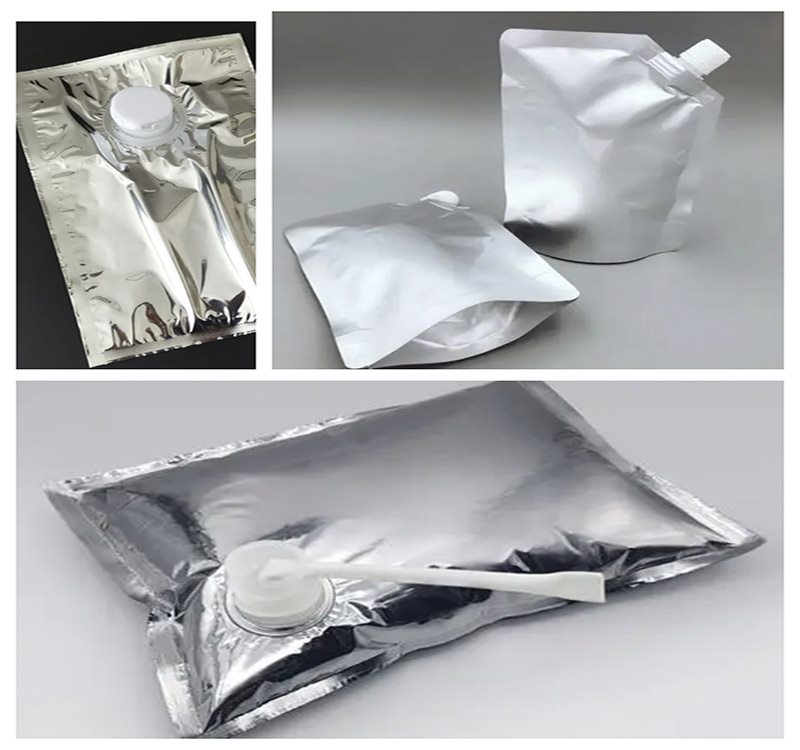- Household Aluminum Foil Classification
- Key Household Aluminum Foil Introduction
- Household Uses for Aluminum Foil
- How Thick is Household Aluminum Foil
- Is Aluminum Foil Toxic When Heated?
- Household Aluminum Foil Manufacturer
- How to Choose Household Aluminum Foil
- FAQs about household aluminum foil?
Household aluminum foil is a common household item, often used for food preservation, cooking, baking, packaging and other purposes. It is a film material made of pure aluminum or aluminum alloy through rolling, and its thickness is usually between 0.009mm and 0.2mm.

Other aluminum alloys sometimes used for household foil include AA1235 and AA8079, which have similar properties to AA8011 but are used in different applications or regions, depending on availability and cost.
Household aluminum foil is commonly used for food storage, packaging and cooking. Aluminum foil is flexible, strong and resistant to moisture, air and light, which makes it an ideal material for preserving food and protecting it from contamination.
Household Aluminum Foil Classification
Household aluminum foil is generally divided into two types : ordinary aluminum foil and heavy-duty aluminum foil.
- Regular aluminum foil is suitable for general cooking and packaging.
- Heavy-duty aluminum foil is stronger for tougher cooking and baking tasks.
Household aluminum foil is also divided into special coatings, such as non-stick coatings, antibacterial coatings, etc., to enhance its performance and functionality.
Household aluminum foil comes in different thicknesses
- The thinnest aluminum foil is used to wrap food,
- Thicker aluminum foil is used for cooking and baking.
- Foil can be used to wrap leftovers and store them in the refrigerator or freezer, to cover bakeware to keep food from drying out, and even to line bakeware to prevent food from sticking.
Key Household Aluminum Foil Introduction
The alloys commonly used in household aluminum foil are pure aluminum or aluminum alloys, and the most commonly used alloys are AA 8011, AA 1235 and AA 8079. These alloys are ductile and flexible, can be easily pressed into thin films, and are resistant to high temperatures and corrosion. In addition, they have good tensile strength and tear resistance, making them excellent at protecting food from spoilage or contamination.
8011 household aluminum foil, 8079 household aluminum foil, and 1235 household aluminum foil are all in soft (O) state. They differ mainly in alloy composition, performance characteristics and application fields.
8011 Household Aluminum Foil
8011 aluminum foil has good softness and is suitable for home baking and cooking. It is often used to make baking pans, ovens, and baking pans.
8011 Household Aluminum Foil has a certain amount of iron and silicon elements added to its composition, which has good ductility, film resistance, corrosion resistance and heat resistance.
- Application : It is suitable for baking, frying and packaging in various cooking methods, such as household, catering and food processing and other fields.
- Examples of common applications include : bakeware, ovens and bakeware for home baking, freezer bags for takeaway packaged food, bags for food processing, and more.

8079 Household Aluminum Foil
8079 aluminum foil has good oxidation resistance and is suitable for packaging of beverages and dairy products.
8079 household aluminum foil has high aluminum content and has excellent fresh-keeping and anti-oxidation properties.
- Application : Suitable for packaging and preservation of various foods and beverages, such as dairy products, juices, beverages, coffee, etc.
- Common application examples include : milk cartons, juice cartons, coffee packaging, canned beverage lids, etc.

1235 Household Aluminum Foil
1235 aluminum foil has the highest aluminum content and has excellent flexibility, ductility and corrosion resistance.
The purity of 1235 household aluminum foil is higher than that of 8011 household aluminum foil, so it is more widely used in some occasions that require higher purity, such as pharmaceutical packaging, electronic product packaging, etc.
- Application : Suitable for various packaging and household use, such as baking, bakeware, oven, home preservation, cooking and food packaging and other fields.
- Examples of common applications include : bakeware, ovens and bakeware for home baking, freezer bags for takeaway packaged food, bags for food processing, and more.
The strength of 8011 household aluminum foil is higher than that of 1235 household aluminum foil, so it can be used in some packaging that needs better waterproof and moisture-proof performance, such as packaging meat, seafood, frozen food, etc.
Household Uses for Aluminum Foil
- Food packaging : Household aluminum foil is one of the most common food packaging materials, which can be used to package various foods, such as chocolate, cheese, candy, coffee, tea, vegetables, meat, etc., with moisture-proof, anti-oxidation, anti-odor, fresh-keeping Features.
- Cooking and baking : Household aluminum foil can be used for cooking and baking, such as in the oven, roasting vegetables, fish, meat, etc., and can also be used for the bottom of the steaming plate, the insulation layer of the oven, etc.
- Medical and health : Household aluminum foil can be used in the medical and health fields, such as packaging medicines, medical equipment, masks, etc., with the characteristics of moisture-proof, anti-oxidation, anti-odor, and fresh-keeping.
- Arts and crafts : Household aluminum foil can be used in the field of arts and crafts, such as for making artwork, handmade products, decorations, etc.
- Other fields : Household aluminum foil can also be used in other fields, such as electronics, construction and other fields.
| Product Name | Application | Alloy | Temper | Thickness | Width |
| Container Foil | Food Container | 3003/8011 | O/H22/ H24 | 0.045mm – 0.12mm | 150mm – 1300mm |
| Household Aluminum Foil | Food packing | 1235/8011 | O | 0.01mm – 0.02mm | 150mm – 1250mm |
| Aluminum Foil for Hot Seal | Bottle Hot Seal | 1050/1060/ 1070 | H18 | 0.14mm – 0.27mm | 900mm – 1100mm |
How Thick is Household Aluminum Foil
- Thickness : Household aluminum foil typically ranges in thickness from 0.016 to 0.024 mm (16 to 24 microns).
- Width : Household aluminum foil is usually sold in 30cm (12in) wide rolls, but wider and narrower rolls are also available.
- Length : The length of a roll of household aluminum foil varies widely, from 7.5 meters (25 feet) to 200 meters (656 feet) or more.
- Alloy : Household aluminum foil is usually made of aluminum alloy, which contains between 92% and 99% aluminum, with small amounts of iron, silicon, and other elements added to improve its strength and other properties.
- Surface treatment : Household aluminum foil is usually coated with a thin layer of food-grade plastic or wax to prevent sticking and improve its barrier properties.
It's worth noting that different manufacturers may offer different specifications for their household aluminum foil products, so it's always a good idea to check packaging and product information to ensure you're getting the right product for your needs.
Is Aluminum Foil Toxic When Heated?
One important thing to keep in mind when using aluminum foil is that it is not safe to use with acidic foods like tomatoes or citrus fruits because the acid will react with the aluminum and cause it to leach into the food. It's also important to avoid aluminum foil in the microwave, as it can create sparks and start a fire. Instead, use microwave-safe containers or cover food with microwave-safe lids or waxed paper.
Overall, household aluminum foil is a useful and convenient kitchen item that aids in food storage, cooking, and baking. It is very important to use it safely and correctly to avoid any potential health risks
Household Aluminum Foil Manufacturer
Haomei Aluminum large-scale aluminum foil manufacturer is a large-scale aluminum foil production and export base, which can produce 1235 aluminum foil, 1060 aluminum foil, 3003 aluminum foil, 5052 aluminum foil, 8011 aluminum foil, 8079 aluminum foil, etc., which are used for food, medicine, tape foil, lunch box material, container foil, Milk cap materials and many other fields, users all over the world, welcome to consult and quote!
How to Choose Household Aluminum Foil
1. Thickness Selection
Standard aluminum foil typically has a thickness of about 0.00062 inches. It is suitable for most general food packaging and cooking needs, such as wrapping meats for freezing or covering oven pans.
Heavy-duty aluminum foil has a thickness usually around 0.0009 inches. It is more durable than standard foil, suitable for applications requiring increased strength and protection, like covering heavy-duty grill racks or lining barbecue doors.
2. Common Uses
Standard aluminum foil is suitable for everyday food packaging, freezing storage, and basic cooking coverings.
Heavy-duty aluminum foil is more appropriate for tasks that require higher strength and durability, such as baking, long-term cooking, and protecting cookware.
3. Cost and Accessibility
Standard aluminum foil is relatively inexpensive and widely available for most kitchen tasks.
Heavy-duty aluminum foil typically costs slightly more but offers additional protection and durability for specific needs.
4. Selection Advice
If your usage primarily involves regular cooking and food packaging, standard aluminum foil is an economical and practical choice.
If you need foil for situations involving high temperatures or a higher risk of physical damage, consider opting for heavy-duty aluminum foil for better protection and durability.
FAQs about household aluminum foil?
What gauge is household aluminum foil?
Household aluminum foil typically has a thickness of around 0.016 mm (16 microns). This corresponds to a gauge of approximately 24 gauge, although the exact gauge can vary slightly depending on the manufacturer.
How thick is household aluminum foil?
Household aluminum foil typically has a thickness of about 0.016 mm (16 microns). This can vary slightly depending on the brand and specific product, but it's a common thickness used for various household purposes such as wrapping food, covering dishes, or lining baking sheets.



